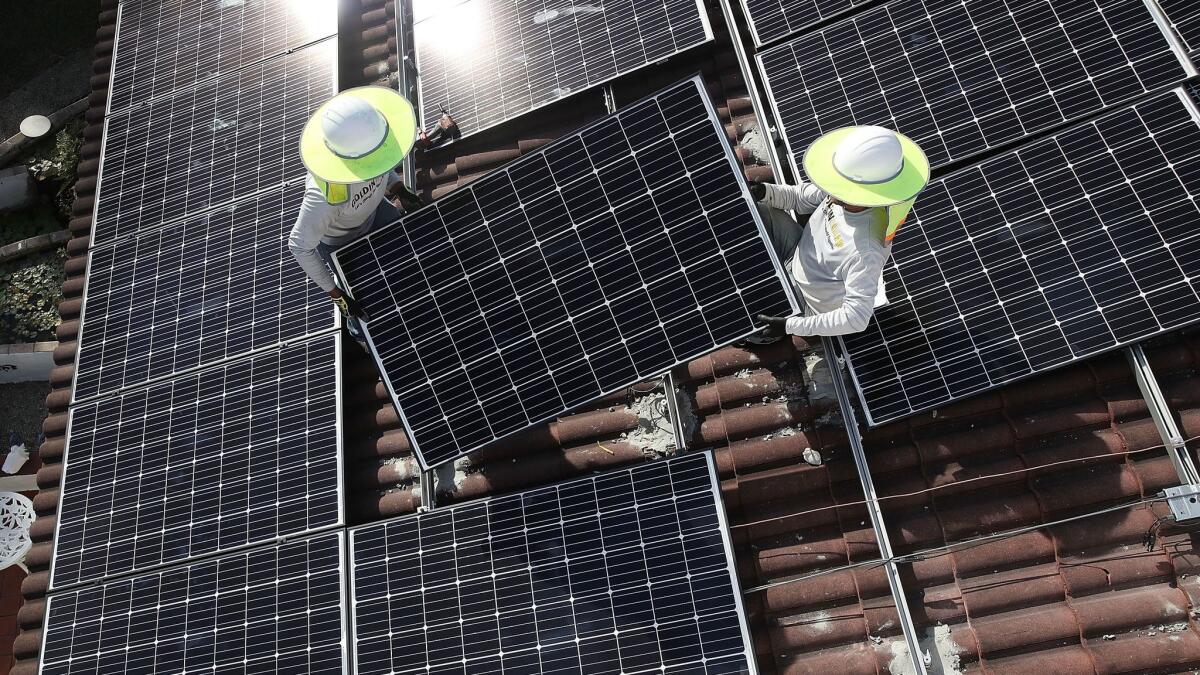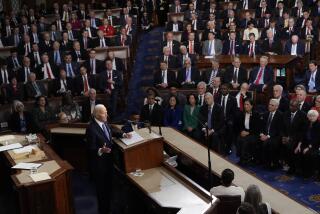Number of solar jobs drops 14% in California and nearly 4% nationwide

After several years of growth, the number of jobs in the solar energy sector took a hit in 2017, with California absorbing the biggest blow.
Solar employment dropped 14% in California last year, which was largely responsible for a 3.8% decline nationwide, according to the National Solar Jobs Census released this week.
It was the first time those jobs have dropped in the history of that annual census, which first came out in 2010.
California lost 13,636 jobs in the industry last year, more than any other state.
“Being the biggest solar state, it’s not surprising that California takes the biggest hit,” said Ed Gilliland, senior director for the Solar Foundation, a nonprofit in Washington that supports solar energy adoption and releases the jobs census each year.
California is home to about 40% of the nation’s solar capacity and employs seven times as many solar workers as any other state.
Massachusetts saw a larger percentage drop in employment (21%), but California’s sheer size relative to the solar market dragged the national growth of solar jobs into negative territory.
The census results did not surprise Barry Cinnamon, chief executive of Spice Solar, a San Jose company that specializes in residential installations.
“I’m definitely seeing a little bit of a slowdown from the standpoint of jobs for solar in California,” he said.
Why solar numbers were down
One of the biggest reasons for the decline stemmed from the fact that 2016 was a banner year for the industry. Nationally, 51,000 solar jobs were added that year and California accounted for almost half of them.
New installations in the U.S. doubled from 7.5 gigawatts in 2015 to 15 gigawatts in 2016, in many cases from customers who feared Congress would get rid of the federal government’s 30% tax credit for solar projects.
That led to a rush to sign up for projects before the end of the year. As it turned out, Congress extended the tax credit in December 2015, but many projects were already under contract for 2016.
Specific to California, last year’s extremely wet winter also led to a reduction in installations.
“That puts a big crimp in the residential market especially,” Gilliland said, “because who wants to buy solar in the rain?”
Another reason for the decline: California utilities instituting “net metering 2.0” rules pertaining to how rooftop solar customers — homes and businesses with solar panels on their roofs — are paid for the excess electricity their systems send back to the grid.
Under the new rules, there are times of day when selling that excess electricity brings in less money than it used to.
Utilities want to discourage people from running appliances and devices that consume a lot of energy — air conditioners, washers and dryers, for example — at times of day when demands on the power grid are highest. So they’re moving customers to time-of-use pricing, making electricity more expensive during high-demand times and cheaper during low-demand times.
The peak, or most expensive, rates occur in the evening.
“That means when you’re selling [excess solar-generated electricity] in the afternoon, you’re not getting as good a rate,” Gilliland said.
Under those conditions, buying a rooftop solar system can be less tempting.
Unease about tariffs
The solar jobs census was conducted in October and November, when the industry was very concerned about the Trump administration imposing tariffs on imports of solar modules, especially from Asia.
Two manufacturers called for the tariffs, saying the imports were unfair, but the U.S. solar industry in general opposed them, saying higher costs would hurt the domestic market.
President Trump had not made a ruling at the time the census was taken, but 71% of the respondents said the pending case already had hurt their businesses.
Last month, Trump imposed four years of tariffs, starting at 30% and stepping down each year. The tariffs were not as high as some in the solar industry had feared, but they are expected to weigh on the sector — especially on utility-scale projects because of their size.
What 2018 holds
Despite the head winds, the businesses taking part in the solar census projected solar-industry job growth of 5.2% this year, bringing the nation’s total to 263,293 jobs. They cited figures that indicate more growth for the industry in the long term.
In the last five years, the solar workforce in the U.S. increased 110%, or 131,000 jobs.
Twenty-nine states reported increases in solar jobs in 2017. Utah, Minnesota, Arizona and New Jersey reported the largest gains.
“We could definitely be in some choppy waters over the next year or two, but the states with strong policies and strong economics should continue to do well and continue to grow,” Gilliland said.
Information for the census came from 2,389 establishments; the Solar Foundation said 77% of those “completed or substantially completed” the survey. The margin of error is plus or minus 1.25% for the national employment numbers.
Business
rob.nikolewski@sduniontribune.com







